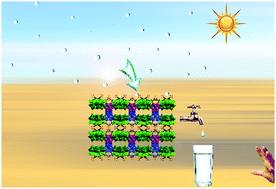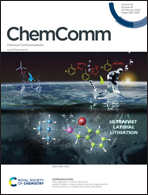A bi-polyoxometallate-based host–guest metal–organic framework†
Abstract
Anionic POMs prefer to bond with positive metal cations instead of neutral or negative organic ligands. Therefore, it is challenging to synthesize POM-based MOFs, let alone bi-POM-based host–guest MOFs. In this work, an unprecedented bi-POM-based host–guest MOF, Na[Ni(enMe)2]4[Ni(enMe)2(H2O)2]2{[Ni6(μ3-OH)3(enMe)3 (SIP)1.5(B-α-PW9O34)]2[H3PNiW11O40]}·5enMe·33H2O (1), with Ni6-capped [PW9O34] as the node of the host framework and Keggin-type [PNiW11O40] units as the guest was synthesized. 1 showed excellent chemical stability towards aqueous solutions of pH 2–12 at both ambient and boiling temperature, providing opportunities for its application in fresh water harvesting from air.



 Please wait while we load your content...
Please wait while we load your content...